Sunday Nov 16, 2025
Sunday Nov 16, 2025
Thursday, 31 August 2023 03:39 - - {{hitsCtrl.values.hits}}
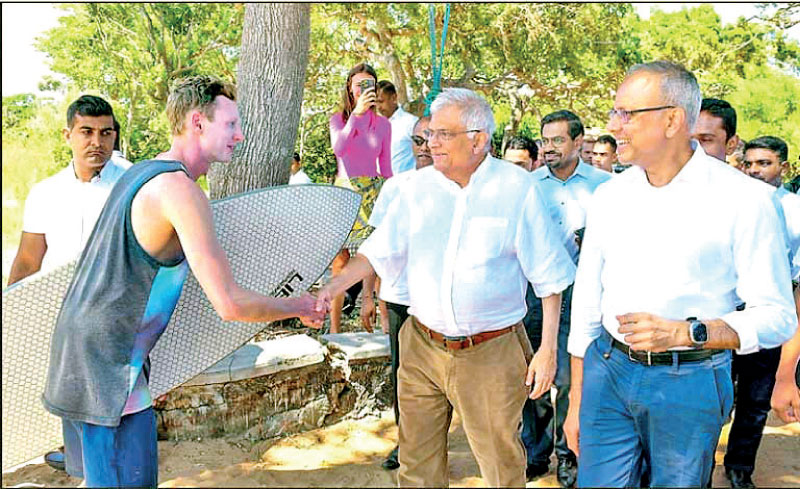
President at bay
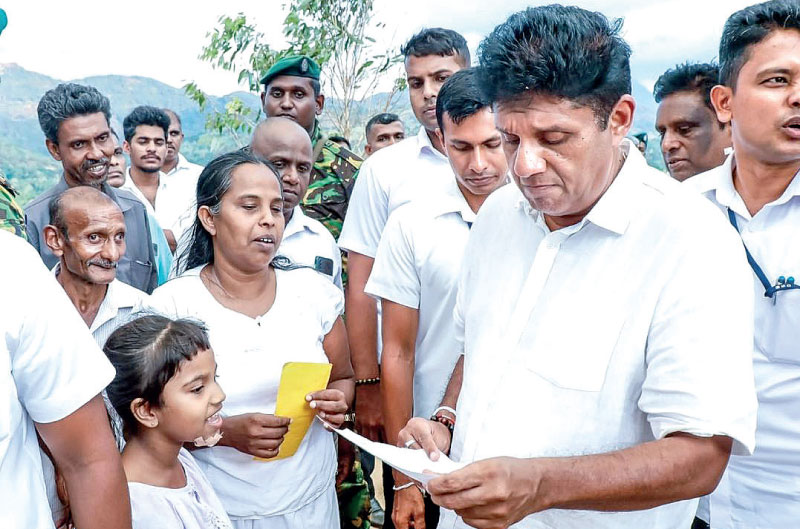
Will he follow his father’s policies?
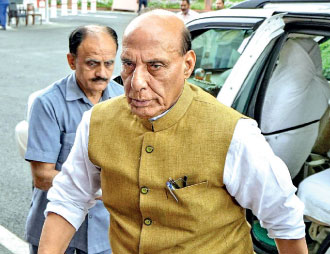
India’s Defence Minister to tour Trincomalee
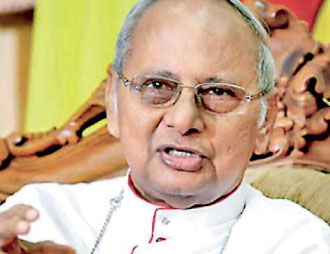
Demands referendum on bridge
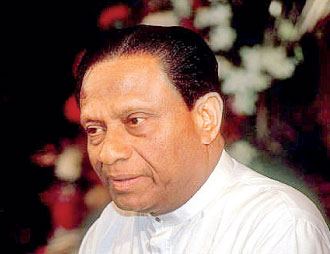
Independence and sovereignty
“We welcome encouragement, assistance and support from abroad. But we will never compromise our sovereignty or sell our independence to anyone.
However far, however close or however powerful any nation may be, it has no right to…maintain an unwelcome presence on our soil. The blood of Sri Lankans, past and present, has not been shed to
subordinate our country.”
–President Ranasinghe Premadasa, 22 Sept. 1989
“This is a sickness!”
—Cardinal Malcolm Ranjith, 27 Aug. 2023
 Why is the Indian Defence Minister rather than an Economics or Infrastructure Minister due to visit Trincomalee this weekend in the wake of the Ranil-Modi arrangement?
Why is the Indian Defence Minister rather than an Economics or Infrastructure Minister due to visit Trincomalee this weekend in the wake of the Ranil-Modi arrangement?
“Indian Defence Minister Rajnath Singh will visit Sri Lanka early next month and travel to Trincomalee where India has embarked on strategic investments with the final aim of establishing a pipeline linking the two countries for the transfer of petroleum products...
…The visit holds significance because it takes place in the context of Sri Lanka and India having agreed at the highest level to implement connectivity projects including a land bridge and the interconnection of the national grids...” (Indian Defence Minister to visit Sri Lanka early next month - Breaking News | Daily Mirror)
When a powerful foreign country or commercial enterprise of a foreign country achieves pre-ponderance over a vital district and province of another, the military forces/contractors/security personnel of the former tend to follow. This is Asia’s experience with the Dutch East India Company and the British East India Company.
Does the visit of the Indian Defence Minister to the East imply that the proposed projects are ‘dual use’--civil and military? Will Indian projection of hard power accompany or follow the Indian economic footprint? Does it signal that any attempt to undo Wickremesinghe’s sellout will be met with force?
Ranil’s aberration
Has the Maldives deliberately deepened and multiplied its dependence on Sri Lanka? Has Singapore on Malaysia? Or Vietnam on China? Bangladesh on India? Cuba on the USA? Why then is Ranil making us massively structurally dependent on India? Sri Lanka will become to India what Puerto Rico is to the USA.
The reason SAARC isn’t like ASEAN or the EU, is the huge asymmetry of India within it, which makes all its neighbours wary. Asymmetry is why, even during the Gorbachev-Yeltsin decade of appeasement, the West refused to let giant Russia join a “common European home”.
Reading off history and geography, all Ceylonese/Sri Lankan leaders since Independence have followed the Kautilyan doctrine of tacitly recognizing the neighbour as posing the most abiding threat due to the very fact of proximity. They attempted to balance-off India and particularly Tamil Nadu in various ways, because they all shared a common threat perception, though their strategies differed. DS Senanayake sought to use the UK connection. SWRD and Sirimavo Bandaranaike nurtured good relations with India while buffering us by embedding us as dynamic members in a vast movement of the global south, the NAM which prominently included India. JR tried the US-UK connection but ended up craftily using Delhi to balance off Tamil Nadu. Our most cerebral and celebrated Foreign Minister Lakshman Kadirgamar worked closely with India to prise out Ranil, but having internalized the shock of being offered evacuation as the only Indian assistance during the LTTE’s advance on Jaffna in 2000, realistically recalibrated towards China, while inducting the JVP leaders into the foreign policy loop and sending them to Beijing for political and economic education. Ranil is doing the exact opposite: integrating with India, and most especially Tamil Nadu.
‘This is a sickness’
Who gave President Wickremesinghe, when and where, the mandate, the legitimacy –the right--to charge ahead with dismembering our country’s shape and destiny? This country is owned by its people; those living now and those to come. Ranil’s grand plan tramples popular sovereignty enshrined in the Constitution as the basis of our democratic republic. It is despotism suffused with treachery.
In his homily at the Basilica of Our Lady of Lanka, Tewatta, Ragama on 27 August, Cardinal Malcolm Ranjith denounced the move as “a stupid decision”, demanded a national Referendum on the bridge to India and delivered a powerful moral slap:
“…Now, they are attempting to construct a bridge to India…We have not broken off from a larger country and always stood separately. In the past, our nation engaged in economic interactions with India, yet we never succumbed to subjugation. Whenever we found ourselves ensnared by foreign influences, it was primarily a result of the betrayal committed by our own leaders.”
“…After gaining independence, we appear to be relinquishing it once again…divide our country into pieces and auction them off. Nothing will be left. This is a sickness.” (Cardinal calls for referendum on Indo - SL bridge | Daily FT)
Eastern lands
In Trincomalee, President Wickremesinghe reiterated the scale and scope of the proposed transformation under Indian auspices.
“President Ranil Wickremesinghe yesterday envisioned massive development in the Eastern Province akin to the Mahaweli project and converting Trincomalee to an economic hub.
…Highlighting the strategic importance of the endeavour, President Wickremesinghe underscored the comprehensive vision for Trincomalee’s transformation into a multifaceted hub encompassing energy, transportation, maritime commerce, naval operations, aviation, industry, and tourism. He underscored the collaborative role of India in realising this strategic program…
…The convened meeting was dedicated to deliberating upon the developmental initiatives within the Eastern Province, with particular emphasis on the Trincomalee district. Presently, a comprehensive plan formulated by Surbana Jurong pertains to the Trincomalee district’s development, supported by an established agreement between Sri Lanka and India. It is vital that this accord is executed.
“…Subsequent to this, the trajectory of development is envisaged to extend to Batticaloa and Ampara…The expeditious realisation of our development objectives hinges on the prompt execution of the Eastern Development Plan...”
(President envisions massive development in Eastern Province | Daily FT)
President Wickremesinghe’s Trincomalee speech contains several references to “land”, an emotive issue in a multiethnic area, but the implications are not merely or primarily ethnic. There is a hint of coming displacements and invasion by multinational agribusiness – perhaps the Adani group which India’s farmers successfully protested against—under the guise of “modernised agriculture”. There are also hints of a reduction of forest cover to facilitate ‘modernised agricultural practices’.
“…President Wickremesinghe asserted that land stands as the essential factor of the development trajectory…
…President Ranil Wickremesinghe further commented: “…Simultaneously, a blueprint is in place for the establishment of modernised agriculture within this vicinity and this model is intended to be extended to other areas within the Eastern Province. The active involvement of both the Mahaweli Authority and the Land Department is envisaged in these pursuits…
…The resolution of land-related issues, particularly concerning Mahaweli-designated land, is pivotal for the advancement of these endeavours. Pertinently, the execution of the Trincomalee Development Plan encompasses the acquisition of land in accordance with the 1985 Mahaweli scheme…
“…Recalling the Mahaweli Development Scheme’s implementation in 1985, certain lands bestowed by the Duke of Edinburgh have been designated as forests by the Ministry of Wildlife. While preserving the forested area at 32%, it is envisaged that remaining lands should be harnessed for the country’s developmental pursuits.
“In the contemporary global landscape, nations such as Singapore and Dubai have strategically harnessed extensive land resources to propel their developmental pursuits... This underscores the need to establish modernised agricultural practices within our nation, thereby leveraging agricultural products as a means to fortify our global economic presence…” (Ibid)
“Bestowed by the Duke of Edinburgh”? “Bestowed”, huh? There is no land belonging to the Duke of Edinburgh or any other aristocratic British colonialist on this island that didn’t belong to the people of Sri Lanka and wasn’t robbed from us. Does Ranil mean the classification as forests by the Ministry of Wildlife is questionable, and the policy should instead be to cap forest cover at 32%, move the farming communities off the lands and embark massively on multinational corporate agriculture, servicing Singapore and Dubai?
DS Senanayake established land settlements in the Eastern Province, and JR Jayewardene and Gamini Dissanayake forged ahead with the Accelerated Mahaweli project, “bestowing” land-titles on the farmers under the Swarna Bhoomi program. The land-related --especially Mahaweli lands related-- aspects of Ranil’s Indianisation of the East could trigger justifiable peasant resistance.
The East as Bosnia
At its very core the ‘Eastern Development Plan’ is not ‘developmental’, which is why India’s Defence Minister will be in town. It is primarily a strategic enclave for India on Sri Lankan soil and in Sri Lankan waters, illegitimately gifted by Ranil.
This is the area that the secessionist-terrorist Velupillai Prabhakaran tried to carve out as Tamil Eelam. Today it won’t be an Indian enclave instead of a Tamil Eelam; it will become both. The Ranil process would cause Tamil Nadu and the ex-Tamil Eelam to become a single economic and emotional space, reinforcing the common linguistic and religious-cultural grid. This can make Tamil Nadu surge southwards and our island’s North and East press northwards to form a Greater Tamil Nadu/ Greater Tamil Eelam, flip-sides of a coin. Prosperous postwar peace was shattered in Ethiopia when terrible conflict suddenly broke out in Tigray and now in Amhara. With our history, geography and demography, and the belligerent Diaspora charge of ‘genocide’, what is to say a secessionist war won’t ever break-out in Sri Lanka again? With a large Indian footprint in the East and North, the salience of Tamil Nadu within India, and the Ranil bridge to Tamil Nadu, how will the Sri Lankan military ever fight and win that war, defending the territorial unity of the country? The island will be Cyprusized, i.e., partitioned.
Ranil’s grand-plan integrates the North and East of Sri Lanka not with the South of Sri Lanka as it should, but with the South of India, which it shouldn’t. This will inexorably lead to the island being dragged--ripped--apart between North-East and South, far more surely and successfully than Prabhakaran ever could.
The externally-driven spread of Wahhabi-ism in the Eastern province led to jihadi-ism, Zahran and the Easter bombings. What centrifugal mayhem will the spread of Hindutva and the influence of the RSS and Shiv Sena in the North and East result in?
The East is a ‘fault-line’ province (in Huntington’s civilizational sense). Mervyn de Silva often wrote in the Lanka Guardian that “the East could be our Bosnia”. Ranil’s plan may make my father’s grim prophecy come true. In its cumulative consequences, President Wickremesinghe’s Indianisation plan is the greatest geopolitical threat to Sri Lanka at least since Independence.
Ranil as Yeltsin
In March 1991, a referendum was held throughout the vast territory of the USSR by President Gorbachev, on the future of the USSR. Over 70% voted for the retention of the socialist Soviet Union. By December 1991, together with two other leaders of Soviet Republics, President Yeltsin dissolved the USSR. What the bulk of Hitler’s Nazi divisions failed to do -- destroy the USSR-- a treacherous leader did with a signature, following it up with a devastating ‘free-market’ fire-sale of state enterprises and assets.
President Wickremesinghe is about to do the same to Sri Lanka, with two crucial differences:
(a) Yeltsin was popularly elected by over 50% of voters in mid-1991.
(b) Russia, as the world’s largest country, could afford the loss of its peripheries.
Ranil isn’t popularly elected and Sri Lanka is a small country which cannot afford any diminution of its people’s sovereignty over its territorial space. Here, the subtraction of sovereign space is an unforgivable historic crime.
Sajith’s stand
Since Ranil has no popular mandate, not being elected to the presidency or even to parliament by the sovereign people, the citizens of Sri Lanka are not bound by any agreement he has entered into.
The Lankan citizenry must make this the defining issue at the Presidential election next year, starting now. It should be a replay of the 1988 presidential election where the manifestos of both frontrunners, Sirimavo Bandaranaike and Ranasinghe Premadasa pledged the de-induction of foreign forces.
Tragically today, in the face of the historic challenge of Ranil’s Indianisation, this country’s mainstream, moderate, democratic politics has no combative patriotic leaders like Ranasinghe Premadasa and Sirimavo Bandaranaike. Only the Left is left.
This year, the 30th death anniversary year of Ranasinghe Premadasa, and the next, the centenary year of his birth, one can only hope his only son Sajith ignores the siren song to adopt of the supine foreign policy of his father’s foes, Gamini Dissanayake (‘Finlandisation’) and Mangala Samaraweera (‘foreign judges’), in favour of his father’s unambiguous, unflinching patriotism:
 “There is no sense in my becoming President if I am to surrender the independence of my motherland or if I am to allow it to be divided into pieces. For the sake of remaining as President or for the sake of personal gain, I shall not betray my motherland. I have not inherited such treacherous qualities. I have no intention of passing down such a shameful reputation to my descendants either.”
“There is no sense in my becoming President if I am to surrender the independence of my motherland or if I am to allow it to be divided into pieces. For the sake of remaining as President or for the sake of personal gain, I shall not betray my motherland. I have not inherited such treacherous qualities. I have no intention of passing down such a shameful reputation to my descendants either.”
(Ranasinghe Premadasa, candidacy acceptance speech, UNP Special Session, Sugathadasa Indoor Stadium, October 6th 1988) If Sajith does not stand at the head of the struggle for national independence, sovereignty, and territorial integrity against external hegemonism as his father did, the socialist Left or/and ultranationalist Right surely will.
In 1988 Ranasinghe Premadasa won because he, unlike Mrs Bandaranaike, twinned patriotism (‘de-induction’) with developmental-populism (Janasaviya). If instead, the SJB’s economic program remains free-market-IMF-Indianisation, i.e., ‘Ranilism with a Sajith mask’ rather than an authentic [Ranasinghe] Premadasaist social democratic alternative, AKD’s JVP-NPP could and perhaps should win.
Uncertain election
Ranil throws out timelines for his grandiose economic visions with no mention whatsoever of the electoral calendar, and acts as if he isn’t facing a presidential election or intending to have one next year.
This does not mean the Presidential election will not be held on schedule next year. It means that the JVP-NPP would be foolish not to prepare for that possibility.
In this context, the JVP-FPC (‘Anura-Dullas’) dialogue for the defence of democratic elections, is most heartening and should encompass all parties in and out of parliament. The JVP-NPP vs. FSP-JAV debate is important too. It is about whether or not direct mass action now is imperative to prevent negative processes going forward and consolidating, and guarantee the space even for elections. The FSP-JAV says yes. The JVP-NPP says no, it will rock the boat now smoothly sailing to its inevitable electoral destination next year.
What’s history’s lesson? When Mrs Bandaranaike assumed the NAM Chair on behalf of Sri Lanka, TB Illangaratna and DM Jayaratne began kite-flying about another extension of term. That was pre-empted by the nationwide student uprising after the Police shooting of the Peradeniya freshman Weerasuriya in November 1976, and the railway workers strike led by an independent trade union, which mushroomed into a General Strike.
Ranil’s game-changer is a tectonic shift: thick connectivity, including a bridge, to India. To save Sri Lanka, the JVP-NPP and FSP-JAV must build a bridge to each other. Or someone must do it for them.
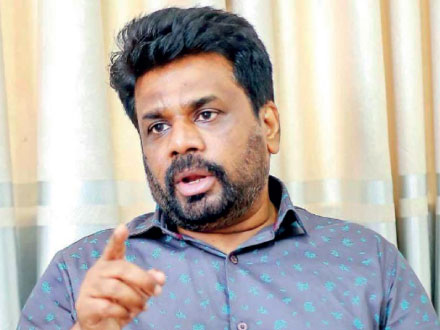
Critiquing Ranil-Modi accord
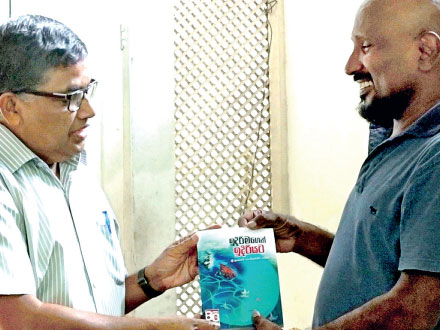
CP meets FSP